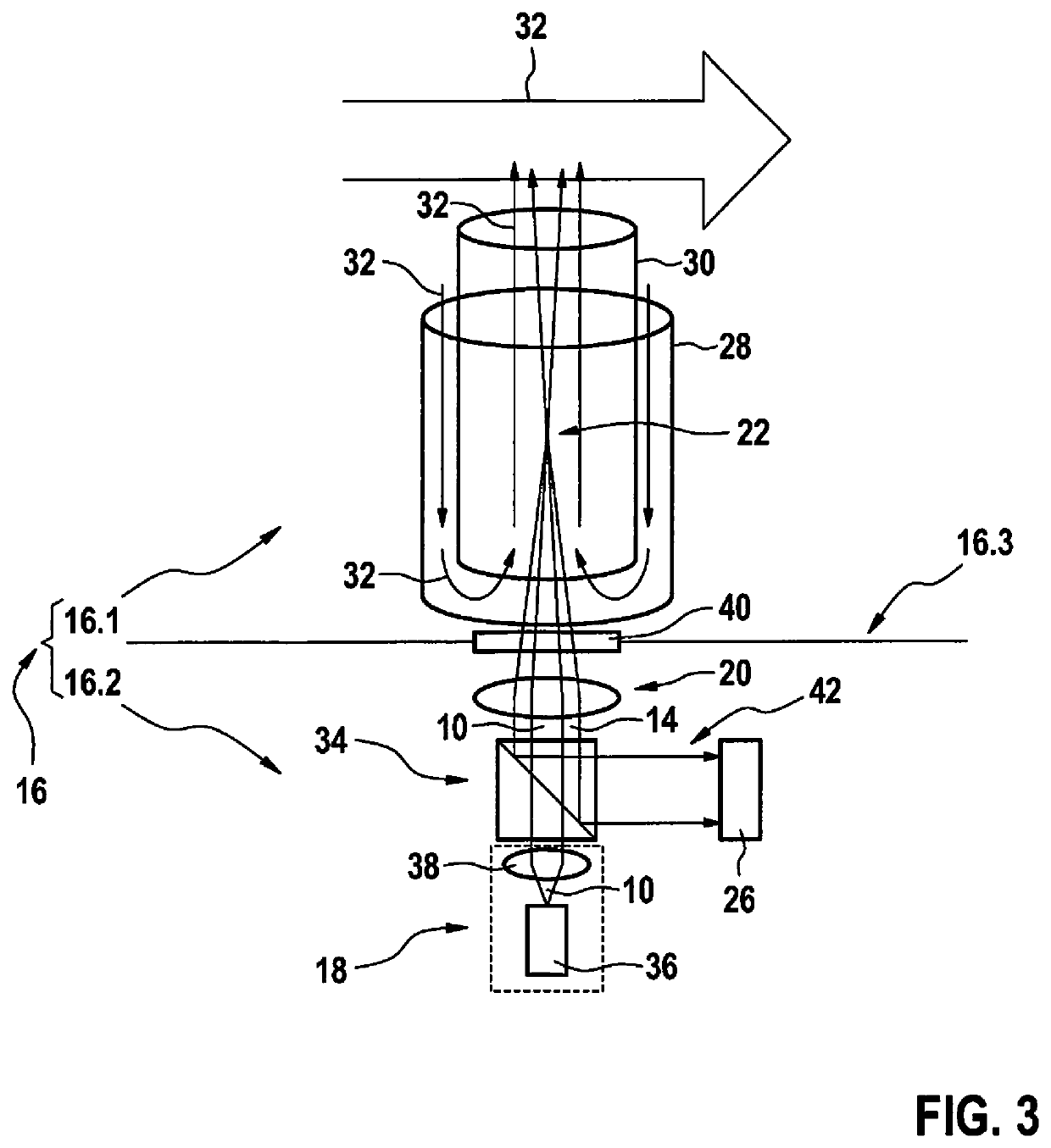Optical soot particle sensor for motor vehicles
a soot particle and motor vehicle technology, applied in the field of soot particle sensor, can solve the problems of small soot particles, only having a small proportion of the total mass, and computation of numeric concentration, etc., to reduce simplify the activation and evaluation, and reduce the effect of the price of the entire sensor uni
- Summary
- Abstract
- Description
- Claims
- Application Information
AI Technical Summary
Benefits of technology
Problems solved by technology
Method used
Image
Examples
Embodiment Construction
[0048]FIG. 1 illustrates the measuring principle based on laser-induced incandescence (LII). Laser light 10 of high intensity is incident on a soot particle 12. The intensity of laser light 10 is sufficiently high that the energy of laser light 10 absorbed by soot particle 12 heats soot particle 12 to several thousand degrees Celsius. As a consequence of the heating, soot particle 12 emits significant radiation 14, spontaneously and essentially without a preferred direction, in the form of temperature radiation, also referred to hereafter as LII light. A part of radiation 14 emitted in the form of temperature radiation is therefore also emitted opposite to the direction of incident laser light 10.
[0049]FIG. 2 schematically shows a basic structure of an exemplary embodiment of a soot particle sensor 16 according to the present invention. Soot particle sensor 16 includes a CW laser module 18 (CW: continuous wave) here, whose parallel laser light 10 is focused using at least one optica...
PUM
| Property | Measurement | Unit |
|---|---|---|
| wavelengths | aaaaa | aaaaa |
| wavelengths | aaaaa | aaaaa |
| wavelengths | aaaaa | aaaaa |
Abstract
Description
Claims
Application Information
 Login to View More
Login to View More - R&D
- Intellectual Property
- Life Sciences
- Materials
- Tech Scout
- Unparalleled Data Quality
- Higher Quality Content
- 60% Fewer Hallucinations
Browse by: Latest US Patents, China's latest patents, Technical Efficacy Thesaurus, Application Domain, Technology Topic, Popular Technical Reports.
© 2025 PatSnap. All rights reserved.Legal|Privacy policy|Modern Slavery Act Transparency Statement|Sitemap|About US| Contact US: help@patsnap.com



